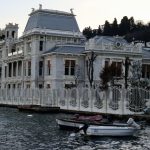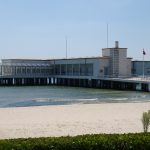Istanbul’s Belgrade Forest is a vast expanse of woodland (almost 5,500 hectares for those who like the figures) that stretches out around Bahçeköy just inland from Büyükdere. It takes its rather confusing name from the fact that back in the 16th century it was resettled with Serbians after Süleyman the Magnificent occupied their country in 1521 and decided that they would make the perfect supervisors for the network of forest aqueducts and reservoirs on which İstanbul depended for its water supply.
The small village actually called Belgrade became a fashionable bolthole from the high heat of summer in the 18th century and the writer Lady Mary Wortley Montagu was just one of the foreigners to find refuge there. She went on to wax lyrical about its beauties in her letters home: it “perfectly answers the description of the Elysian Fields,” she wrote. But in 1826 Sultan Mahmud II disbanded the Janissary corps which rose up in rebellion against him. Most of them were slaughtered during what came to be known as ‘the Auspicious Incident’. Some of the rebels fled into the Forest which was set on fire. Belgrade Village was destroyed in the course of the struggle. Today only small pieces of wall and the ruins of its church hint at the story.
The Forest is an area of mixed woodland, with as many perennially green pines as deciduous oaks that ring the colour changes. To see the foliage at its most joyful, you’re best off heading straight for the 296-hectare Atatürk Arboretum (closed Saturdays and Sundays) near Bahçeköy, which is İstanbul’s finest botanical garden. Basically a research facility with more than 2,000 species of plant, it makes a great place to go for a stroll along neatly laid-out paths around a lake. You can pick up a leaflet at the entrance that highlights some of what there is to see but the main attraction in autumn will be the collection of oak trees from all around the world which can be relied on to pull out all the colour stops.
Supplying the city with water
Belgrade Forest may be a great place just to hang out and have a picnic, but if you like to have more of a purpose to an outing then there are also some magnificent and under-visited sights to be scouted out amid the trees.
From as far back as Roman times, the old city of Constantinople drew most of its water either from the woodlands of northern Thrace or from the Belgrade Forest. The Aqueduct of Valens that straddles busy Atatürk Bulvarı as it runs uphill from the Golden Horn is the most obvious of the monuments that bear witness to the complex system needed to bring the water into the city but there are many other reminders to be discovered, especially in the Belgrade Forest.
Here there were two separate channelling systems. The older of the two was the Kırkçeşme system that directed water into town at Eğrikapı (Crooked Gate) hard against the city walls. Some of the aqueducts and reservoirs that supported this system were originally built in Roman and Byzantine times but in the 16th century Süleyman the Magnificent commissioned the great Ottoman architect Sinan to upgrade everything. The result was a series of magnificent aqueducts that criss-cross the roads near Kemerburgaz.
Most impressive of all is the Maglova Kemer (Aqueduct), a thing of exceptional strength and beauty that is sadly not accessible to casual visitors. The restored Uzunkemer (Long Aqueduct), on the other hand, still stands right across a busy road. Nearby, the Eğrikemer (Crooked Aqueduct) is almost equally impressive.
As the population of İstanbul grew, so the water supply system had to be expanded to cope which resulted in a second supply line – called the Taksim system – being set up in the forest. Most of its aqueducts and reservoirs were built in the 18th century; the most conspicuous monument is the Mahmud I Kemer, erected in 1732, that stands right beside the road in Bahçeköy. The Taksim system ended at the large cistern in Taksim Square that now serves as a small art gallery.
Eating
The roads into the forest feature several large restaurants with manicured lawns set amid the trees where you can either order a pre-cooked meal or settle down to barbecue your own on the spot. But if the weather holds nothing could be nicer than to picnic deeper in the forest, perhaps around Neşet Suyu or Büyük Bend (Reservoir), the end points of a marked walking trail, near Bahçeköy, that are set up for the sort of full-on picnics favoured by Turkish families. The trouble is that the world and his wife will have the same idea at the weekend. For romantics who crave privacy for their leaf-peeping a midweek visit will be a much better option.
Transport info
It’s not easy to explore the forest without a car although there are dolmuşes to Bahçeköy from Büyükdere.

